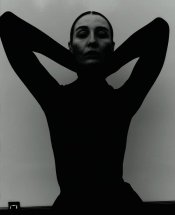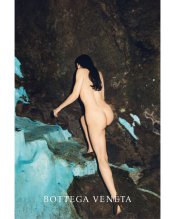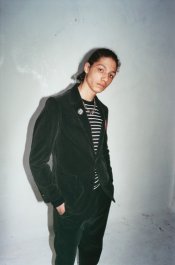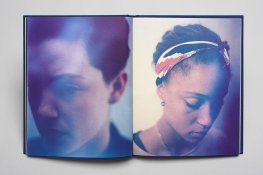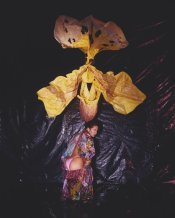While I'm aware of the limitations of using soft light in a theatrical setting, my point is that studying theatrical lighting will only teach you theatrical lighting. Studio or location lighting has its own needs and advantages, and much more flexibility of light placement, the size of reflectors or panels and so on, and one of the most powerful techniques in lighting for still images - mixing strobe and continuous light. Strobes are a huge tool for still shooting, with endless possibilities and an endless learning curve - but you won't learn a thing about them studying cinema or stage lighting. (Not to say those are useless areas of study, I learned a tremendous amount of technique from studying cinema lighting; I had to apply what I learned of that to using strobes though).
I don't think using arrays of light to create soft lighting is very practical - it takes more gear, more time, and an endless rabbit-hole of trying to eliminate overlapping shadows of various densities. Sure, it can be done, or you can achieve the same end in moments with a softbox or bounce or diffusion. If you believe "the time for hard light has come", I'm not sure what that even means. For my work, I envision the look I want and get out the tools to turn that idea into an image. If I need a blazing open face or a giant sheet of diffusion, I do it, and I do it in the quickest way possible to get the look that I want.
This is a mix of hard and soft light, and I didn't need an "array" of hard lights to do it, I didn't have the space or time to even consider that. She's a realtor and needed a shot that was bright, warm and natural - it needed a fair amount of strobe power to balance with the sun, and a medium softbox worked out just fine:
This manufacturer was pushing a line of white stretch jeans. We settled on soft and white for the look, and needed poses that showed the fabric would stretch and look good. So the model was surrounded with white ripstop and a few flash heads thrown up - we wanted absolutely no hard shadows, so even her face was popped up a bit with a metal reflector with mylar over it:
Same issue here - I wanted absolute softness to blend with the harsh contrast and grain of the Polagraph film... diffusion panels, strobes, a grid spot with mylar behind the grid on her face. Took about a minute to set up.
So to me, soft light is extremely useful and I have zero interest in trying to duplicate it using the wrong tools (an array of lights vs. a softened source). If that makes me a baby photographer or if people find my work cliche or over-done... as long as I'm pleased with it and my clients keep hiring me to do it, I'm perfectly happy. And heck, I'll still point a fresnel right at a model if I want that look:








